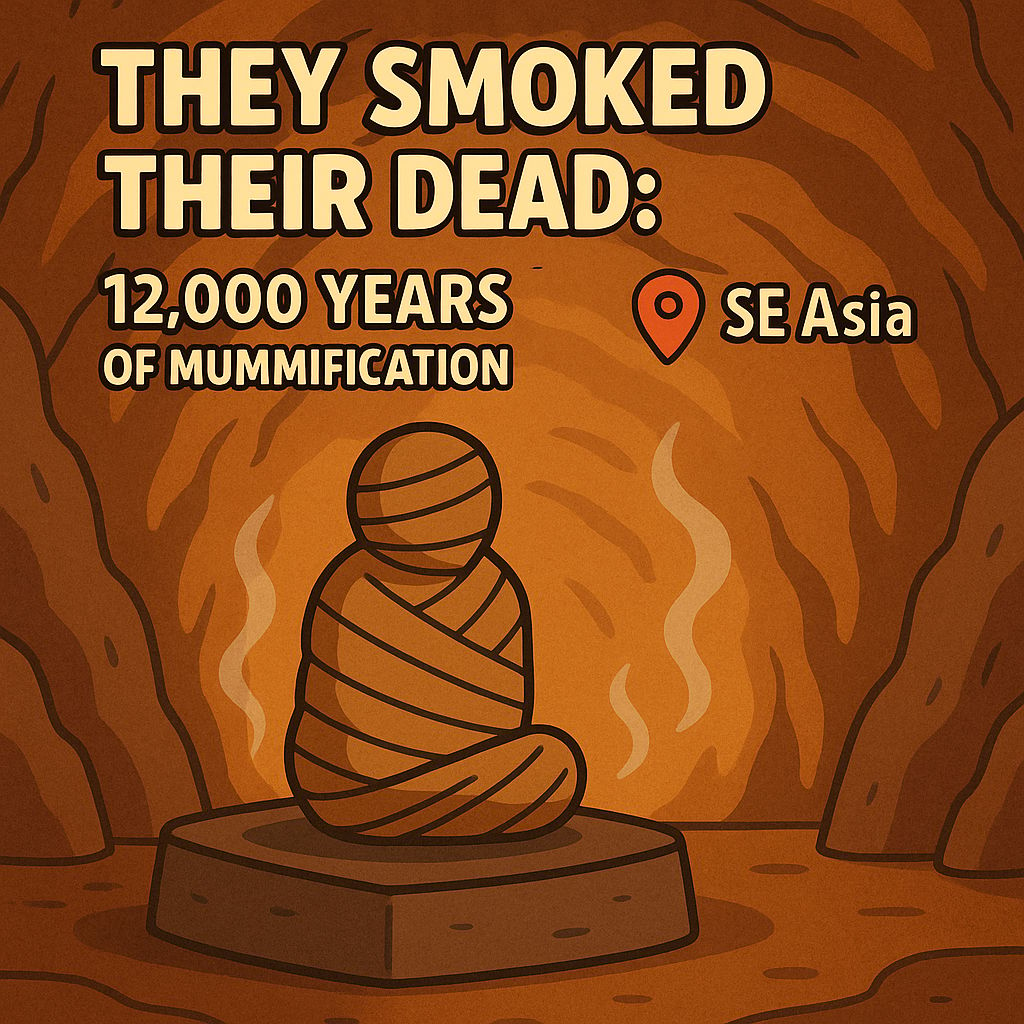What if I told you the oldest mummies in the world weren’t in Egypt, but in Southeast Asia and done by smoking them dry like pros?
Yup, a new PNAS study claims mummification techniques date back ~12,000 years in parts of China and Vietnam (and nearby).
What the Hell Did They Do? 🙃
Archaeologists found human remains that showed signs of smoke-drying or partial burning.
The bodies were buried in crouched or squatting positions, with cut marks or burn traces, suggesting they were treated with heat or smoke, rather than just left to rot or preserved by environment.
The surprising part? This dates much earlier than many of the classic Egyptian mummies. It suggests that prehistoric communities in Asia had fairly advanced body-preservation practices.
Why It Matters 🫠
Rewrites mummy history: We’ve long thought mummification started in ancient Egypt and South America, but now Southeast Asia gets a seat at the table.
Cultural insight: These people probably had beliefs about the afterlife, ancestors, or rituals that needed their bodies preserved.
Preservation clues: Learning these ancient techniques could echo into modern bio-archaeology or even inspire low-tech preservation methods.
Quirky Takeaway:
Turns out, ancient folks in Southeast Asia were doing “smoke mummies” long before Netflix’s Mummy franchise existed. Who knew being dried out could be a funeral trend 12,000 years ago?

